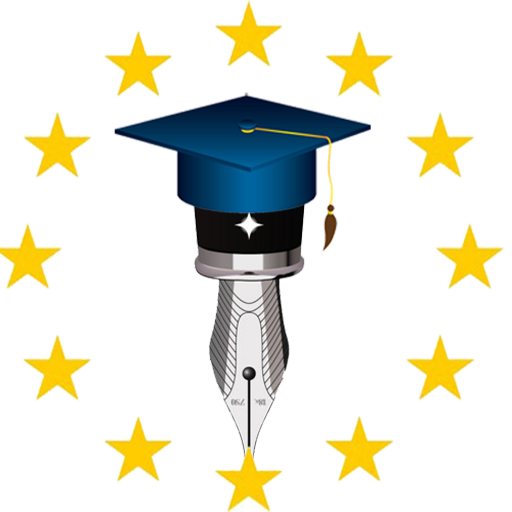
When it comes to making a lasting impression during your college application process, a personal statement is your golden ticket. But what exactly is a personal statement? How can you craft a compelling one that stands out from the crowd? In this comprehensive guide, we will walk you through everything you need to know about writing an exceptional personal statement that captures your essence, highlights your strengths, and makes an impact on admissions committees. Whether you are preparing for college or aiming for a master’s program, this guide will equip you with the insights and tools to ace your personal statement.
Defining the Personal Statement
A personal statement is a succinct and persuasive essay that provides insight into an individual’s background, achievements, goals, and motivations. It serves as a platform for applicants to showcase their personality, skills, and passion in a way that goes beyond the constraints of a traditional resume or application form. Essentially, a personal statement is an opportunity to tell your story and leave a lasting impression on the reader. This article gives you a guide on how to write a personal statement.
How to Write a Good Personal Statement
Writing a compelling personal statement can be a challenging yet rewarding task. Here is a step-by-step guide to help you craft a strong and effective personal statement:
- Understand the Purpose: Before you begin, grasp the purpose of the personal statement. It’s a chance to showcase your uniqueness, experiences, and motivations that make you a strong candidate for the opportunity.
- Research the Opportunity: Understand the institution, organization, or program you’re applying to. Tailor your personal statement to align with your values, goals, and requirements.
- Brainstorm and Outline: Take time to brainstorm your experiences, qualities, and goals. Create an outline that organizes your thoughts and ensures a coherent flow in your statement.
- Engaging Introduction: Start with a captivating hook to grab the reader’s attention. This could be an anecdote, a question, or a striking statement that relates to your story.
- Showcase Your Journey: Describe your background, experiences, and achievements. Use specific examples to illustrate your points and highlight your growth.
- Highlight Relevant Skills: Identify and emphasize the skills and qualities that are relevant to the opportunity. Provide examples of situations where you demonstrated these skills.
- Express Motivation and Passion: Explain why you are passionate about the opportunity and how it aligns with your aspirations. Share personal stories or experiences that have fueled your interest.
- Address Challenges: If you have faced challenges, discuss them candidly. Focus on how you have overcome them and the lessons you have learned.
- Connect Your Story: Make connections between your past experiences, current goals, and future ambitions. Show a clear trajectory and how the opportunity fits into your overall journey.
- Stay within Word Limits: Adhere to any word or character limits specified by the application. Be concise while still conveying all essential information.
- Strong Conclusion: Summarize your main points and reiterate your enthusiasm for the opportunity. End with a memorable closing statement.
- Final Review: Conduct a final review of your personal statement to ensure it meets all requirements and effectively communicates your message.
Personal Statement Outline
Your personal statement should reflect your unique experiences and aspirations while effectively conveying your message to the reader. Here is an outline you can use as a guide when crafting your personal statement:
a) Introduction
- Hook: Engage the reader’s attention with a compelling opening.
- Briefly introduce yourself and the purpose of the personal statement.
- State the central theme or message you intend to convey.
b) Background and Experiences
- Provide a snapshot of your background, including relevant personal and academic details.
- Highlight key experiences that have shaped your journey, such as challenges, achievements, or influential moments.
- Explain how these experiences have contributed to your personal and professional development?
c) Motivation and Aspirations
- Share your motivations for pursuing the specific opportunity (e.g., college, scholarship, and job).
- Express your aspirations and long-term goals in relation to the opportunity.
- Connect your motivations and goals to your background and experiences.
d) Skills and Qualities
- Identify and elaborate on the skills, qualities, and strengths you possess.
- Provide concrete examples that showcase these attributes in action.
- Explain how your skills and qualities align with the requirements of the opportunity.
e) Relevance to the Opportunity
- Discuss why the specific opportunity is meaningful to you and how it fits into your overall plan.
- Highlight aspects of the opportunity that resonate with your values, interests, and goals.
- Explain how you envision contributing to the institution or organization if selected.
f) Overcoming Challenges
- Address any obstacles or setbacks you have encountered.
- Describe how you have overcome or learned from these challenges.
- Emphasize your resilience, determination, and ability to adapt.
g) Conclusion
- Summarize the main points you’ve discussed in the personal statement.
- Reiterate your enthusiasm for the opportunity and your commitment to achieving your goals.
- End with a strong closing statement that leaves a lasting impression.
h) Proofreading and Revision
- Review your personal statement for clarity, coherence, and grammar.
- Seek feedback from trusted peers, mentors, or professionals.
- Make necessary revisions to enhance the overall quality of your statement.
Remember, this outline is just a starting point. You can adapt and customize it based on the specific requirements and guidelines of the opportunity you’re applying for. Your personal statement should reflect your unique experiences and aspirations while effectively conveying your message to the reader. Good luck!
What is the general Format of a Personal Statement?
While there is not a strict standardized format for a personal statement, there are certain guidelines and elements that are commonly included to ensure a clear and effective presentation of your story and qualifications. Here is a general format that you can follow:
a) Introduction
- Start with a captivating hook to grab the reader’s attention.
- Briefly introduce yourself, mentioning your name and any relevant background information.
- State the purpose of the personal statement and the opportunity you are applying for.
b) Body
- Divide the body of your personal statement into several paragraphs or sections, each focusing on a specific aspect of your story, experiences, skills, and aspirations.
- Use headings or subheadings to guide the reader through different sections if it enhances clarity.
c) Background and Experiences
- Provide an overview of your background, including academic achievements, work experience, and relevant activities.
- Share specific experiences, challenges, or accomplishments that have influenced your journey.
d) Motivation and Aspirations
- Explain why you are interested in the opportunity you are applying for.
- Describe your short-term and long-term goals and how they align with the opportunity.
e) Skills and Qualities
- Highlight the skills, qualities, and strengths that make you a strong candidate.
- Provide examples or anecdotes that demonstrate these attributes in action.
f) Relevance to the Opportunity
- Discuss how the opportunity fits into your overall plan and why it is important to you.
- Explain how your background, experiences, and goals align with the values and goals of the institution or organization.
h) Conclusion
- Summarize the main points you have discussed in your personal statement.
- Reiterate your enthusiasm for the opportunity and your commitment to achieving your goals.
- End with a strong closing statement that leaves a lasting impression.
i) Formatting and Length
- Use a clear and legible font, such as Times New Roman or Arial, in a reasonable font size (e.g., 11 or 12 points).
- Use standard margins and line spacing for readability.
- Adhere to any word or character limits specified by the application.
Conclusion
Crafting a compelling personal statement for college is a journey that requires introspection, creativity, and effective communication. As you embark on this endeavor, remember that the personal statement is your canvas to paint a vivid portrait of your unique qualities, experiences, and aspirations. It is an opportunity to stand out from the crowd and leave a lasting impression on admissions committees.
For further guidance and inspiration, explore the rich tapestry of personal statement examples available and if you want to pursue nursing you can explore various nursing career goal essays. These real-life narratives showcase the diverse ways in which individuals have successfully shared their stories and ambitions. By studying personal statement formats and strategies, you can glean valuable insights to shape your compelling narrative.
Order your personal statement now
As you embark on this transformative journey, consider exploring our comprehensive resources. From demystifying the personal statement format to offering expert insights, we equips you with the tools you need to craft a personal statement that resonates with your target college or university. And when the time comes, should you choose, you can confidently order a personal statement from us that reflects your individuality while adhering to the highest standards of excellence.






